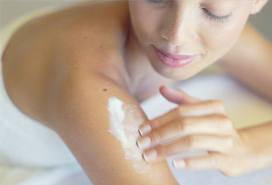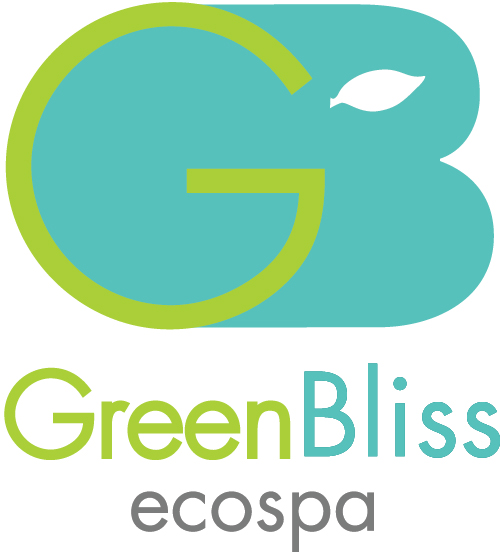Locavore Beauty: The Next Step
 Now is a great time to consider shopping for your beauty and bath products outside of large department stores or online retail giants. For the same reason you might have changed your food buying habits, and are now shopping at farmer’s markets or through food cooperatives, so too, would you for body products: purer ingredients, direct contact with the maker/higher quality control, and support of small business and the local economy.
Now is a great time to consider shopping for your beauty and bath products outside of large department stores or online retail giants. For the same reason you might have changed your food buying habits, and are now shopping at farmer’s markets or through food cooperatives, so too, would you for body products: purer ingredients, direct contact with the maker/higher quality control, and support of small business and the local economy.
All throughout farmer’s markets, artisan craft fairs and small neighborhood boutiques, there are an increasing number of vendors showcasing their handmade beauty products: face creams, skin tonics, body butters, soaps, bath elixirs, etc. Many of them grow some, if not all of the ingredients used in their products, or they are sourcing from other local suppliers. What you, the consumer, will miss in terms of fancy packaging and a multitude of choices, sizes, and versions of a product, is the trade off of experiencing beautiful and simple products made with love and care, fresh from the garden to you.
Here’s a short list of tips to help you shop smarter and get the most out of your foray into “locavore beauty”:
- Ask detailed questions from vendor regarding ingredients and processes, and when it was made. The more you get to know your vendors and take the time to find out about their philosophy and methods, the more satisfied you’ll be with their products. Lastly, find out how long your product is made to last and recommended storage procedure.
- Smell Test: Natural herb and flower scents will always be much more subtle than frgranced commercial grade brands.
 The handmade product will most likely contain the herbs/flowers not just for their smell but for their efficacy – their ability to achieve results. Generally, the products will not be designed to be shipped or sitting on shelf for long, so there will be no need for artificial preservatives, emulsifiers, or thickeners (the last 2 things help ingredients maintain a consistent appearance so they have better “shelf appeal” against the competition in the stores). Homemade products will be preserved with salts, alcohols such as bourbon/brandy, honey or maple syrup. Their main moisturizing ingredients will aloe vera gel, or carrier oils such as olive, apricot kernel, grapeseed, coconut, avocado, and hemp. Fragrances will come from essential oils. So do the smell test every few days at home, to see how your product is holding up.
The handmade product will most likely contain the herbs/flowers not just for their smell but for their efficacy – their ability to achieve results. Generally, the products will not be designed to be shipped or sitting on shelf for long, so there will be no need for artificial preservatives, emulsifiers, or thickeners (the last 2 things help ingredients maintain a consistent appearance so they have better “shelf appeal” against the competition in the stores). Homemade products will be preserved with salts, alcohols such as bourbon/brandy, honey or maple syrup. Their main moisturizing ingredients will aloe vera gel, or carrier oils such as olive, apricot kernel, grapeseed, coconut, avocado, and hemp. Fragrances will come from essential oils. So do the smell test every few days at home, to see how your product is holding up. - The textures will also be a bit different as the ingredients are not being put through an assembly line process which chemical additives to keep the ingredients from separating. That’s okay- give it a good shake or stir to blend before using.
- Keep in the fridge to prolong life of product. At a minimum, store in a DARK, cool, dry cabinet.
- A lot of times ingredients won’t be listed as “certified organic” which is okay. It can be a time consuming (expensive) process that a small mom and pop vendor cannot afford to undertake. If they are sourcing high quality ingredients that haven’t been compromised with chemicals then it should be fine.
- Hopefully, you’ll happen upon a seller that packages her products in re-usable containers: once you’ve finished using it, you can bring it back for a re-fill. It’s a great suggestion to impart to your favorite vendor if they are not yet selling this way.
Economically, it’s always a good thing to cut down on your impulse buying habits with your beauty products from department stores and on-line shopping sprees. Through thoughtful locavore shopping, you’ll be able to refine the products that you really use and get the most out of, the most often. Oftentimes, we buy beauty products based on some ideal of who we think we are or want to be according to the marketing campaigns being put forth by the product manufacturers. It’s a MULTI – BILLION DOLLAR boondoggle designed to separate you from your money and engender insecurity about yourself – and we women, especially, have been falling for it, for years.
Believe it or not, Bulgarian lavender, Atlas mountain cedar, or Brazilian goji berry, as wonderful as they are, are imported with huge carbon footprints. They also will probably not achieve more stunning results and be better for you than the beneficial qualites you can get from California lavender, Texas cedar, or Washington blueberries.
 Maybe your eco-aware beauty habits will evolve toward the next step: the fun and satisfaction of learning to make your own. It’s the same trajectory that has hopefully happened with your food: buying locally and learning to cook has supplemented constant eating out and overdependence on packaged/frozen foods. Food for your body beauty is no different!
Maybe your eco-aware beauty habits will evolve toward the next step: the fun and satisfaction of learning to make your own. It’s the same trajectory that has hopefully happened with your food: buying locally and learning to cook has supplemented constant eating out and overdependence on packaged/frozen foods. Food for your body beauty is no different!
Next Blog: Recipes to Make Your Own Beauty Products

 The handmade product will most likely contain the herbs/flowers not just for their smell but for their efficacy – their ability to achieve results. Generally, the products will not be designed to be shipped or sitting on shelf for long, so there will be no need for artificial preservatives, emulsifiers, or thickeners (the last 2 things help ingredients maintain a consistent appearance so they have better “shelf appeal” against the competition in the stores). Homemade products will be preserved with salts, alcohols such as bourbon/brandy, honey or maple syrup. Their main moisturizing ingredients will aloe vera gel, or carrier oils such as olive, apricot kernel, grapeseed, coconut, avocado, and hemp. Fragrances will come from essential oils. So do the smell test every few days at home, to see how your product is holding up.
The handmade product will most likely contain the herbs/flowers not just for their smell but for their efficacy – their ability to achieve results. Generally, the products will not be designed to be shipped or sitting on shelf for long, so there will be no need for artificial preservatives, emulsifiers, or thickeners (the last 2 things help ingredients maintain a consistent appearance so they have better “shelf appeal” against the competition in the stores). Homemade products will be preserved with salts, alcohols such as bourbon/brandy, honey or maple syrup. Their main moisturizing ingredients will aloe vera gel, or carrier oils such as olive, apricot kernel, grapeseed, coconut, avocado, and hemp. Fragrances will come from essential oils. So do the smell test every few days at home, to see how your product is holding up.
Recent Comments